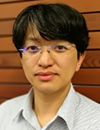Plenary Speakers

Research Toward Monolithic Three-Dimensional ICs
Lance Li
Taiwan Semiconductor Manufacturing Company (TSMC)
Abstract: Internet of things and artificial intelligence demand further performance improvements in integrated circuit systems. One ongoing effort is to continue the transistor scaling with either new device architectures or adopting new materials with superior gate controllability [1]. Another attractive approach is to construct three-dimensional integrated circuits (3D ICs) with monolithic integration; for example, adding sensor functionalities, or constructing upper-layer logic circuits or memory devices on CMOS Si wafers [2]. The research on materials and processes compatible with the backend-of-line (BOEL) fabrication temperature (< 400 oC), is urgently needed. In this presentation, I like to discuss on few potential components useful for achieving monolithic 3D ICs including 2D layered materials such as transition metal dichalcogenide based semiconductors, hexagonal boron nitride (hBN) insulators [3], and 1D semiconducting carbon nanotubes. The proof-of-concept monolithic integration of carbon nanotube transistors on our 28 nm CMOS technology wafers has also been demonstrated [4].
References:
- [1] Li Ming-Yang et al. How 2D semiconductors could extend Moore’s law. Nature 2019, 567, 169 (TSMC)
- [2] Deji Akinwande et al., 2D materials for Si technology. Nature, 2019, 573, 507 (TSMC)
- [3] Chen Tsu-An et al. Wafer-scale single-crystal hexagonal boron nitride monolayers on Cu (111). Nature 2020 (TSMC)
- [4] Cheng Chao-Ching et al. Monolithic and heterogenous integration of BEOL power gating transistors of carbon nanotube networks with FEOL Si ring oscillator circuit. IEDM 2019 (TSMC)
Biography: Dr. Lain-Jong (Lance) Li serves as a Research Director in Corporate Research at Taiwan Semiconductor Manufacturing Company (TSMC). He is also the adjunct professor at Univ. of New South Wales (Sydney) and King Abdullah University of Science and Technology (KAUST). He received his BSc and an MSc in chemistry at National Taiwan University. He obtained his PhD of condensed matter physics at Oxford University in 2006. He was an Assistant professor in Nanyang Technological University Singapore (2006-2009). Since 2010, he has become an Associate Professor at Academia Sinica Taiwan. He joined King Abdullah University of Science and Technology in 2014 and became a full professor in 2016. His main research interest focuses on fundamental studies of carbon and inorganic 2D materials, and large-scale growth of various 2D materials for electronic applications. He is recognized as the 2018 & 2019 highly cited scholar (Clarivate) and Universal Scientific Education and Research Network (USERN) 1% top scientist.